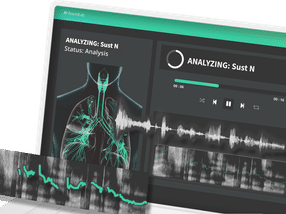Reduction of electrostatic charge to ensure proper volume transfer and trajectory
Quality improvement in high throughput applications
Labcyte Inc. announces the issuance of an new U.S. Patent. This patent describes the use of deionization of microplates and reservoirs to ensure improved precision and accuracy of acoustic droplet ejection (ADE) and other techniques employing the transfer of small fluid droplets. Plastic multi-well microplates such as those commonly used in the discovery of drugs by pharmaceutical companies, often become electrostatically charged due to handling. The electrostatic charge present on either the source well or the destination for the droplet may affect the volume and trajectory of the droplet. In particular, when using acoustic ejection of DMSO droplets, a microplate with an uncontrolled electrostatic charge, secondary or satellite droplets are occasionally seen and the volume variation seen in ADE transfers may vary by more than 25%. With the elimination of electrostatic charge on source wells and the droplet destination as described in this patent, volume variation was shown to reduce to 2% with the complete elimination of secondary or satellite droplets.
"This patent describes technology currently employed in the Echo(TM) 550 and Echo(TM) 555 liquid handlers, " said Chief Technical Officer, Richard Ellson. "Deionization of both the source microplate and the destination microplates ensures that droplets will fly true and that there will be no cross contamination of wells from samples traveling to incorrect wells or failing to reach the destination and falling back into other wells in the source plate. Important for many users of our instrumentation is the excellent accuracy and precision of the transfer."
"We believe that ADE practiced without this patented technology will suffer significantly in quality. Perhaps of greatest concern, when ADE is practiced without deionization, it is possible for the electrostatically charged droplets to travel to incorrect wells leading to cross-contamination and errors in analysis. Our processes complete eliminate that possibility.
ADE transfers compounds directly from source microplates to destination assay plates where both plate types are composed of conventional well plate polymers that are prone to accumulating electrostatic charges from handling like polypropylene and cyclo-olefin copolymer (COC). Direct transfer eliminates intermediate dilutions and the concomitant loss of compounds by adsorption to tips and well surfaces. Pharmaceutical researchers have proved that these losses can lead to failure to identify potential drugs. Elimination of the consumables associated with intermediate dilutions also results in savings that approximate the cost of the instrument in one year.
Labcyte Inc. provides two instruments that use ADE-the Echo 550 liquid handler, which is used in seven of the 10 top pharmaceutical companies as well as at leading academic and research institutions and contract research organizations, and the recently introduced Echo 555, which was designed for UHTS laboratories requiring very high throughput.
Topics
Organizations
Other news from the department research and development

Get the analytics and lab tech industry in your inbox
By submitting this form you agree that LUMITOS AG will send you the newsletter(s) selected above by email. Your data will not be passed on to third parties. Your data will be stored and processed in accordance with our data protection regulations. LUMITOS may contact you by email for the purpose of advertising or market and opinion surveys. You can revoke your consent at any time without giving reasons to LUMITOS AG, Ernst-Augustin-Str. 2, 12489 Berlin, Germany or by e-mail at revoke@lumitos.com with effect for the future. In addition, each email contains a link to unsubscribe from the corresponding newsletter.
Most read news
More news from our other portals
Last viewed contents

UV Mini-Spectrometer C16767MA | UV spectrometers | Hamamatsu Photonics
Invitrogen Licenses Geron Intellectual Property for Development of Research Tools

Significant Breakthrough in Understanding of the Two-State Reactivity Mechanism - Scientists discovered first experimental methodology for measuring low-energy, spin-forbidden transitions in molecular catalysts






























































